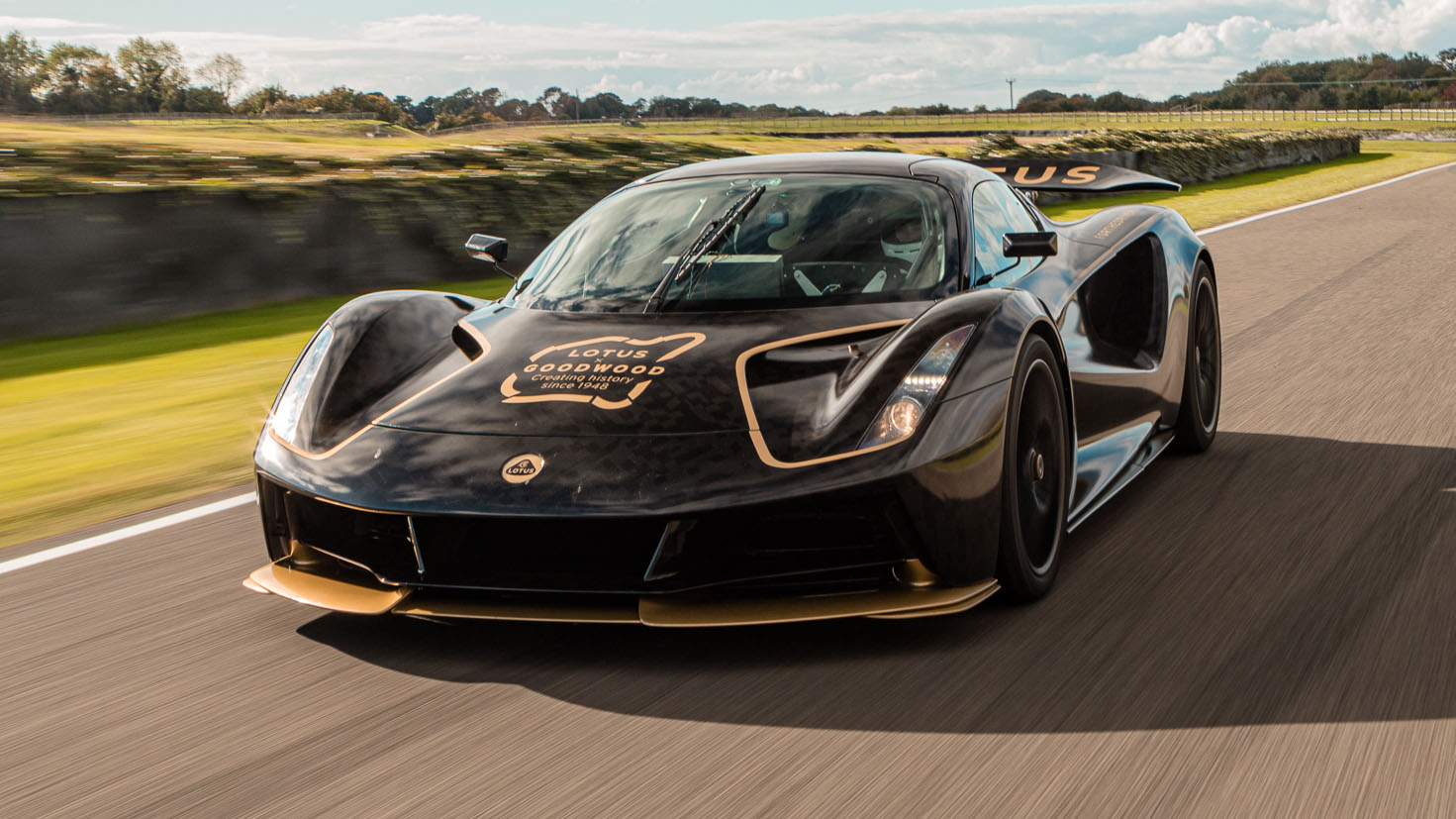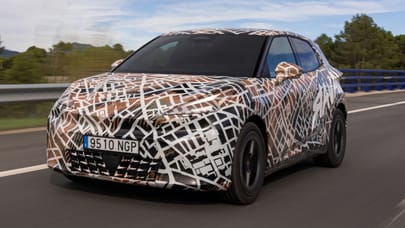
Flat out in the quad-motor Lotus Evija electric hypercar
Video: a passenger ride in a prototype Evija revealed its startling powers of acceleration
It accelerates differently to any other car I’ve ever been in. Because rather than the acceleration tailing off as you go faster, in the Lotus Evija it just keeps ramping up. The more speed you add, the more you’re pinned back into the seat. At some stage, physics dictates, it must let up. But when? 160mph down Goodwood’s back straight and the force multiplier still appears fully engaged.
Trying to get your head around what this must feel like? It’s actually quite simple. Put your internal combustion car in third at 20mph and floor it. Not much to start with then a growing crescendo of acceleration, right? If it’s turbocharged you’ll get the big push at around 3,000rpm. Weirdly then, the all-electric, four motor Evija is more like a naturally aspirated car – progressive delivery all the way, a sense of the car working ever harder and more effectively as the revs rise.
But no piston powertrain has ever been this smooth and consistent in its delivery, and the overall sensation in any other car I’ve ever driven is that acceleration gradually tails off as speed rises. That’s physics, folks. You get to the top of third, change up and the rate of gain diminishes. So now imagine if changing up doubled your power, that your 200bhp third gear car became a 400bhp fourth gear car, an 800bhp fifth gear car…
Now you’re getting some idea of what the Lotus Evija feels like. Because of course it can’t deploy 1,972bhp from the word go – no matter how fat your tyres or how smooth your power delivery. So the Lotus Evija ramps into its acceleration curve, the motors deploying what the tyres can cope with. The claims are that it will hit 62mph in three seconds and 124mph (200kmh) in six seconds. Those are figures we can get our heads around. A Ferrari SF90 hits 124mph in 6.7secs, a Bugatti Chiron Pur Sport takes 5.9secs. But while the Bugatti takes another 6.5secs to reach 186mph, Lotus says the Evija will make the jump in less than half that time – three seconds exactly.
Three second jumps to do each 62mph increment. That’s incredible. Can’t be far off a sustained 1g of acceleration. A straight line on a graph when everyone else curves off. It’s plain bonkers. And in the car the sensation, because the motor spins faster and faster and sounds ever more frantic, is that the rate of acceleration is increasing all the time. It’s an addictive sensation, because you know there’s always more to come, a reason to keep your foot down. Tricky in the real world of course. You don’t want to let up because the growth in power is still there, so it feels almost as if you haven’t got to the best bit yet.
So around Goodwood it wasn’t how it got from 60-100mph that was striking, but how it went from 120-160mph. And as a development car, this one was only running 70 per cent power. Let’s call it 1,400bhp. Mad though this sounds, I was relieved to hear there was more to come. The acceleration, though daft, isn’t yet completely unhinged. It probably does actually need to be faster at real world speeds to be competitive with front line hypercars. Further up, I don’t think many of them could keep pace with a 70 per cent Evija, let alone a fully finished one.
But does it drive like a Lotus? There’s a question. Here’s what you can tell from the passenger seat. It changes direction well. It doesn’t feel heavy and has loads of grip despite the front tyres being relatively modest 265-width Pirellis. But then it’s not a heavy car – 1,680kg in lightest spec, say Lotus, with this development car weighing there or thereabouts. It rides bumps well, feels cushioned, actually has a bit of roll. Agile through Goodwood’s chicane, doesn’t seem to tax suspension or tyres too much. Nice balance front to rear, too. On this evidence it has some Lotus traits, yet is able to cope with the massive power at its disposal.
As far as the powertrain and chassis go, the Evija feels reasonably well advanced. It needs the full 100 per cent torque hit, but it was composed and seemed responsive to steering, brakes and throttle. The interior leaves a lot to the imagination at this stage. But you do sit really low since the batteries are behind you rather than below. As a passenger I was comfortable and confident, blown away by the exponential acceleration, impressed by the handling, but not pumped full of adrenaline in the way you are when there’s a vast, angry V12 and several turbos thrashing away. As yet, no electric car has come up with a replacement for internal combustion’s noise and drama.
Evija timings have slipped slightly. Lotus had said the car would go into production before the end of this year. Delays, largely due to Covid preventing overseas testing, mean the first cars are unlikely to be with owners before May 2021 now. God knows where anyone is going to properly use this £2 million machine other than a Shuttle runway or Bonneville salt flat, but it will give lucky owners a sensation none of their other cars do – a sensation probably quite close to space flight come to think of it.
Top Gear
Newsletter
Thank you for subscribing to our newsletter. Look out for your regular round-up of news, reviews and offers in your inbox.
Get all the latest news, reviews and exclusives, direct to your inbox.
Trending this week
- Car Review
Vauxhall Mokka









